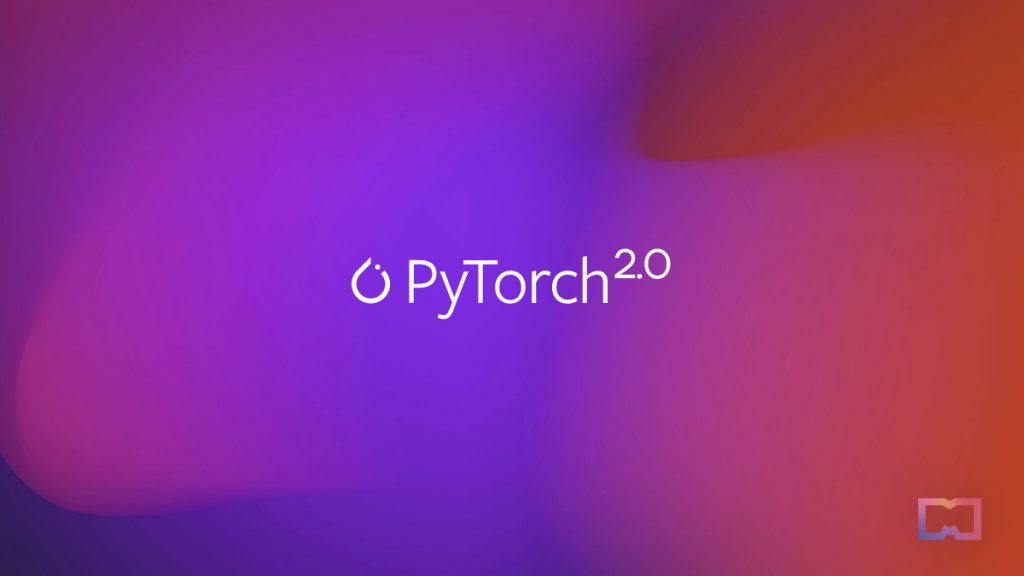The Announcement of PyTorch 2.0: A Major Upgrade to the Machine Learning Framework
In Brief
PyTorch has rolled out its latest version, 2.0, marking a significant enhancement to its open-source machine learning framework, introducing upgraded features and refinements that boost its functionality and versatility.
Among the exciting updates are a high-performance Transformer API along with improved support for training and inference that utilize scaled dot product attention (SPDA).

PyTorch has just announced the highly anticipated launch of PyTorch 2.0 , an open-source framework that the data science community has eagerly awaited. Several new capabilities and upgrades have been introduced, enhancing both its effectiveness and flexibility.
This framework is essential for applications in fields like computer vision and natural language processing and operates under the Linux Foundation’s oversight. It offers powerful tensor computations with GPU acceleration and includes deep neural networks that leverage automatic differentiation. Various deep learning tools, including Tesla Autopilot, Pyro, Transformers, PyTorch Lightning, and Catalyst, are built based on the PyTorch framework.
With the release of PyTorch 2.0, a cutting-edge Transformer API , the training and deployment of next-generation Transformer models have become more cost-effective. This update also introduces high-efficiency support for training and inference, utilizing a custom kernel architecture for scaled dot product attention (SPDA).
At a similar time, PyTorch released OpenXLA and PyTorch/XLA 2.0 are now combined, making a development environment that supports both model training and inference seamlessly. This synergy is noteworthy as PyTorch remains a preferred tool in AI development while XLA boasts superior compiler capabilities. Future investments will focus on enhancing three critical areas.
To support large model training, PyTorch/XLA plans to improve functionalities such as mixed precision training, runtime efficiency, effective model sharding, and accelerated data loading. Some of these capabilities are already in play, while others are scheduled for release later this year, benefiting from the underlying OpenXLA compiler stack.
On the inference side, PyTorch/XLA is dedicated to ensuring competitive performance alongside Dynamo in the upcoming PyTorch 2.0 release. Additionally, features geared towards inference include support for model serving, Dynamo handling for sharded large models, and quantization via Torch.Export and StableHLO.
When it comes to ecosystem collaboration, PyTorch/XLA is broadening its integration with Hugging Face and PyTorch Lightning, offering users access to upcoming features and the downstream benefits of OpenXLA through familiar APIs. This encompasses FSDP support in Hugging Face and quantization capabilities in OpenXLA.
Being an open-source initiative, PyTorch/XLA invites community involvement in its growth. Users can contribute by reporting issues, submitting pull requests, and making requests for comments (RFCs) on GitHub .
Read more:
- China plans to boost VR to $48 billion by 2026
- The White House has introduced a comprehensive framework aimed at regulating digital assets, covering areas such as cryptocurrencies and NFTs.
- Stability AI successfully raises $101 million, reaching a valuation of $1 billion.
Disclaimer
In line with the Trust Project guidelines , kindly remember that the information on this page is not intended to serve as legal, tax, investment, financial, or similar advice. Always invest only what you can afford to lose and consider seeking independent financial counsel if you're uncertain. For further details, we recommend reviewing the terms and conditions as well as the help and support resources provided by the respective issuer or advertiser. At MetaversePost, we strive for precise and unbiased reporting, but please keep in mind that market conditions can alter unexpectedly.







